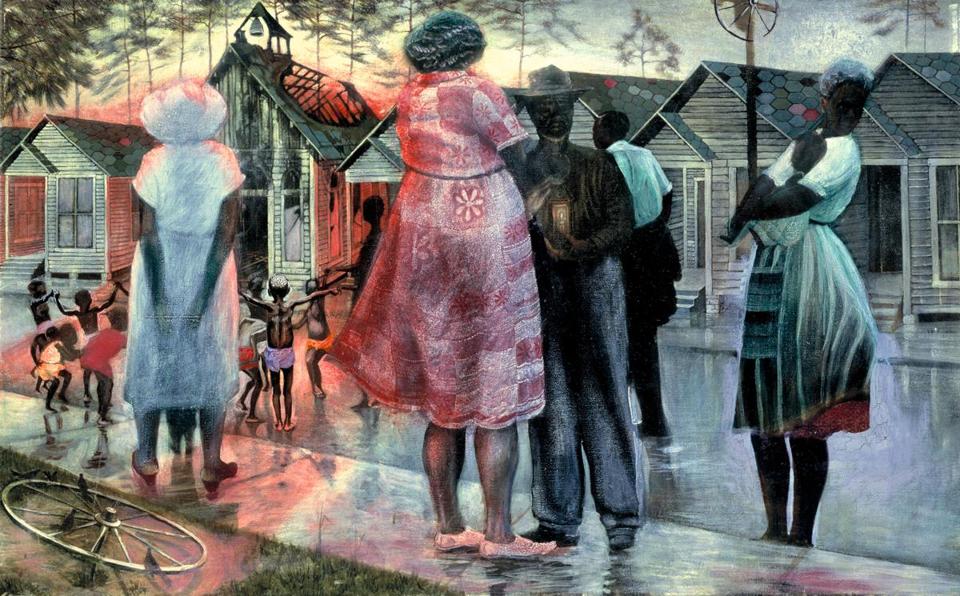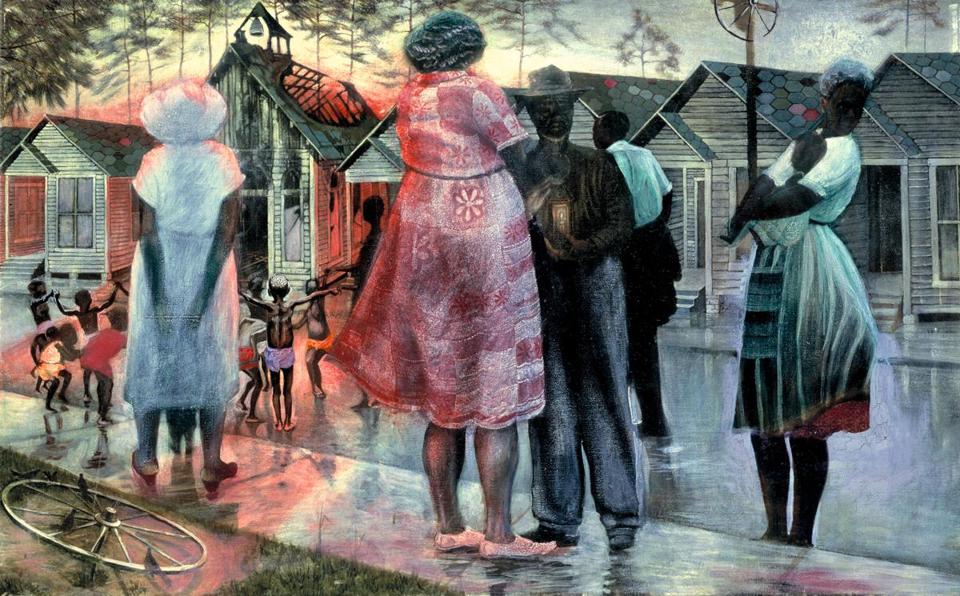“In Conversation: Modern African American Art” comes to the Peabody Essex Museum just as interest in art by black Americans is — belatedly — bubbling to the surface in New England’s art museums.
Prompted by the opening of its Art of the Americas Wing, the Museum of Fine Arts, in particular, has spent several years beefing up its holdings of African-American art. To that end, it established a special committee and courted collectors, in particular John Axelrod, whose large collection of African-American art was acquired in 2011.
The MFA put considerably more of these works on display in the new wing, and, earlier this year, it quietly mounted its first ever retrospective of an African-American artist. It was a small show, just 30 paintings and drawings by the fascinating Lois Mailou Jones, but a solid one.
The Danforth Museum of Art in Framingham has meanwhile put on impressive solo displays by John Wilson and Meta Warrwick Fuller, both pioneering African-American artists.
Institutions such as the Massachusetts Museum of Contemporary Art in North Adams and the deCordova Sculpture Park and Museum in Lincoln have tapped into more contemporary African-American visions with shows by Sanford Biggers and Laylah Ali, respectively.
That’s not all, nor is it enough. But, as the first New England-area museum to present a survey of modern African-American art (from the Harlem Renaissance to the Civil Rights Era and beyond), the Peabody Essex exhibition helps to congeal these disparate efforts.
The danger of reducing singular, enigmatic works of art to dull, dutiful illustrations of identity politics always lurks behind such efforts. After so many years of neglect, though, visibility matters.
So does social history, and this show, which comes to Salem from the Smithsonian American Art Museum in Washington, D.C., does a good job of placing compelling, individual visions by leading African-American artists in the context of the upheavals of (mostly) the middle half of the 20th century.
It does this in part by including a great deal of photography. It’s not all documentary photography by any stretch, but there are enough images that are tethered to the times to evoke a whole landscape of social change.
Roy DeCarava’s “Mississippi Freedom Marcher, Washington, DC,” for instance, is a closely cropped portrait of a girl, devastating in its immediacy. Only the image’s title and the glimpsed fragments of bodies behind and in front suggest a political solidarity to match the sobriety and purpose that radiate from her face.


